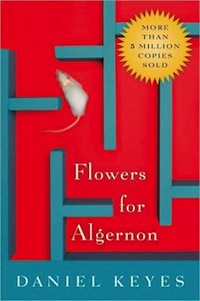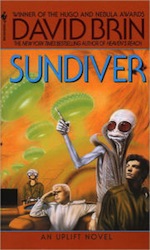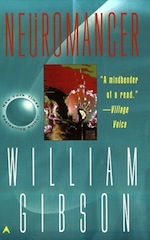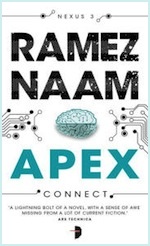Our brains do a lot of work. Though designed for survival—finding food, fighting, and procreation—we also regularly ask them unanswerable questions such as, what are we, why are we here, where do we go when we die, and why do we have to die? To really answer these questions, we may need bigger, or at least better, brains.
My novel Join, takes the old saying, “let’s put our brains together and figure this out,” very literally. When the story begins, there’s a technology that allows small groups of individuals to unify their minds, after which they can live as a single person with multiple bodies. It’s one possible strategy for enhancing brain power, but there are many others. Here are five classic stories, and one modern depiction of brain augmentation that I’ve enjoyed.
Strange Case of Dr. Jekyll and Mister Hyde (Robert Louis Stevenson, 1886)
 In 1886, chemistry looked like a science at the threshold of fundamental truths. Stevenson’s Dr. Jekyll uses “scientific discoveries” to concoct a chemical potion that allows his sinful and virtuous impulses to take turns running their shared body. Neither side of his dual identity really learns more than that the whole experiment wasn’t a good idea, but Stevenson’s story is enthralling.
In 1886, chemistry looked like a science at the threshold of fundamental truths. Stevenson’s Dr. Jekyll uses “scientific discoveries” to concoct a chemical potion that allows his sinful and virtuous impulses to take turns running their shared body. Neither side of his dual identity really learns more than that the whole experiment wasn’t a good idea, but Stevenson’s story is enthralling.
Flowers For Algernon (Daniel Keyes, 1959)
 In Flowers For Algernon, Charlie Gordon hopes that a surgically super-powered brain will relieve his social isolation, but discovers that the isolation wasn’t his fault. Instead, the people judging him were too afraid of his differences to treat him with dignity. This hard truth is one of the few things he gets to keep when his genius eventually fades.
In Flowers For Algernon, Charlie Gordon hopes that a surgically super-powered brain will relieve his social isolation, but discovers that the isolation wasn’t his fault. Instead, the people judging him were too afraid of his differences to treat him with dignity. This hard truth is one of the few things he gets to keep when his genius eventually fades.
2001, A Space Odyssey (Arthur C. Clarke, 1968)
 Rather than power-up human brains, this story gives us HAL, an archetypal artificial intelligence. As a tool to improve brain power, HAL has a promising start, but then suffers a devastating fall. Arthur C. Clarke does offer readers hints at ultimate truth, but the hero finds them on his own, after turning HAL off.
Rather than power-up human brains, this story gives us HAL, an archetypal artificial intelligence. As a tool to improve brain power, HAL has a promising start, but then suffers a devastating fall. Arthur C. Clarke does offer readers hints at ultimate truth, but the hero finds them on his own, after turning HAL off.
Sundiver (David Brin, 1980)
 Sundiver starts David Brin’s wonderfully inventive Uplift series, which portrays an intergalactic tradition of sentient species genetically advancing the intelligence of other species. Brin tacitly addresses the question of “how much intelligence is enough,” by pointing out that the scale may go to infinity. The best reason to uplift another species seems to be for company.
Sundiver starts David Brin’s wonderfully inventive Uplift series, which portrays an intergalactic tradition of sentient species genetically advancing the intelligence of other species. Brin tacitly addresses the question of “how much intelligence is enough,” by pointing out that the scale may go to infinity. The best reason to uplift another species seems to be for company.
Neuromancer (William Gibson, 1984)
 In Neuromancer, characters enhance their mental abilities by tapping into a network. Maybe ironically, these connected characters are fighting for different kinds of personal freedom. At the end of the story, we learn that an AI may be on a path toward ultimate truth, but if it is, it will leave its human creators behind to find it.
In Neuromancer, characters enhance their mental abilities by tapping into a network. Maybe ironically, these connected characters are fighting for different kinds of personal freedom. At the end of the story, we learn that an AI may be on a path toward ultimate truth, but if it is, it will leave its human creators behind to find it.
Apex (Ramez Naam, 2015)
 Alright, slight cheat—for those who count, I recognize that this is a sixth book. But it doesn’t seem right to cover brain enhancements without mentioning 2016’s Philip K. Dick award winner, Apex, by Ramez Naam. Here, augmentation is enabled by nanotech and Naam raises the central questions of identity that Stevenson began with. In Apex, brain tech may help the species survive, but it’s also inevitable: something we’ll all have to think about eventually.
Alright, slight cheat—for those who count, I recognize that this is a sixth book. But it doesn’t seem right to cover brain enhancements without mentioning 2016’s Philip K. Dick award winner, Apex, by Ramez Naam. Here, augmentation is enabled by nanotech and Naam raises the central questions of identity that Stevenson began with. In Apex, brain tech may help the species survive, but it’s also inevitable: something we’ll all have to think about eventually.
Top image from Jekyll and Hyde (2015 series)
 A native of Seattle, Steve Toutonghi studied fiction and poetry while completing a BA in Anthropology at Stanford. After various professional forays, he began a career in technology that led him from Silicon Valley back to Seattle. Join is his first novel.
A native of Seattle, Steve Toutonghi studied fiction and poetry while completing a BA in Anthropology at Stanford. After various professional forays, he began a career in technology that led him from Silicon Valley back to Seattle. Join is his first novel.









